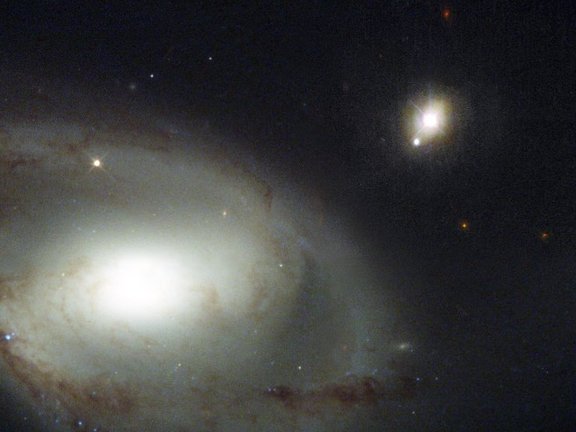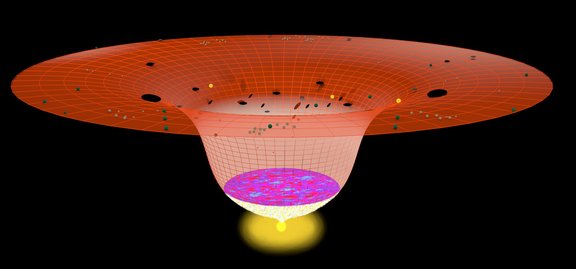The standard model of cosmology is based on Einstein's theory of General Relativity. It describes the evolution of the universe consisting of normal matter and the mysterious substance known as dark matter. It also contains the infamous cosmological constant which is known to cause the accelerated expansion of the universe, though an explanation for the origin of this constant remains elusive. Because of this and other arguments, there are a number of proposals for extensions of the cosmological standard model that are based on Einstein's general theory of relativity, as well as for cosmological models that are based on fundamental generalizations of gravitation beyond Einstein's theory. This poses the question of how available data can test or narrow down alternative cosmologies.
A team in the division of particle and astro-particle physics at the MPI for Nuclear Physics addressed this question by means of statistical methods applied to several available astrophysical data sets. These cosmic standard candles and standard rulers are comprised of, besides data related to the early Universe and the well-known supernovae of type I, recent data from distant quasars. In this way, the researchers were able to test the predictions of the cosmological models at a number of different redshifts, i.e. distance scales, and determine cosmological parameters to a higher level of precision. The magnitude of the redshift of certain spectral lines of the standard candles depends on the speed at which these objects recede from us. Given the accelerated expansion of the universe, one can in turn deduce the distance to the standard candles.
“First, we performed a combined analysis of all data by means of the cosmological standard model”, explains PhD student Jonas Rezacek regarding their approach, “we then did the same with two different extensions of the standard model and compared the resulting parameters.” The analysis showed that both extensions do not yield statistical improvements, and that the calculated parameters are practically the same as those derived from the standard model.
Beyond Einstein
Going another step farther, the scientists next put two alternative gravitational models on the test bench; these are known to experts as “Bigravity” and “Conformal Gravity”. While Bigravity adds an additional component to Einstein’s gravity, Conformal Gravity implies a drastic alteration to the accepted theory of gravitation by which fundamental length scales become irrelevant. This model is particularly interesting because, in principle, it can function without the need for dark matter. Both models offer a possible explanation for the cosmological constant.
Two different cosmologies based on Bigravity were found not to yield statistical improvements, but instead yielded parameters practically indistinguishable from those of the cosmological standard model. Application of the statistical methods to Conformal Gravity yielded a more dramatic result however: the theory turns out to be largely unapt. In addition, contradictions to measurements at the galactic level emerged, which can only be reconciled if the existence of dark matter is assumed after all.
“Our results first show how well the cosmological models based on general relativity can describe the current data. The examples beyond Einstein show that extensions of general relativity lead to cosmologies that can already come into conflict with the existing data”, emphasizes Manfred Lindner. He is nevertheless optimistic: “Our work helps to limit possible extensions of general relativity.”
Original publication:
Probing alternative cosmologies through the inverse distance ladder, M. Lindner, K. Max, M. Platscher, J. Rezacek, Journal of Cosmology and Astroparticle Physics, 15.10.2020 online, DOI: 10.1088/1475-7516/2020/10/040

